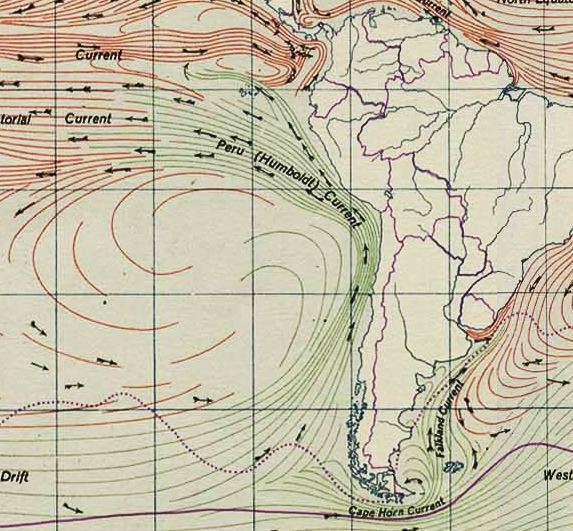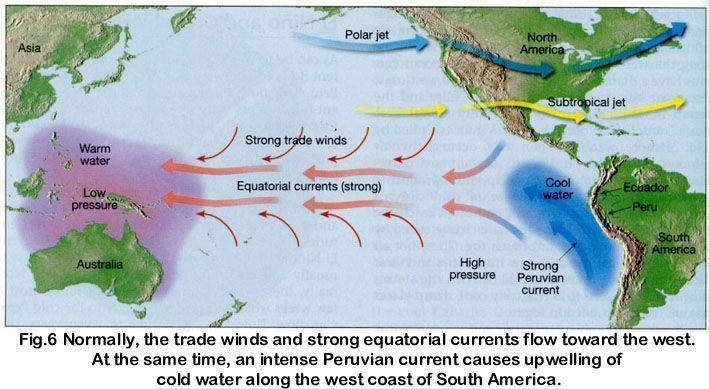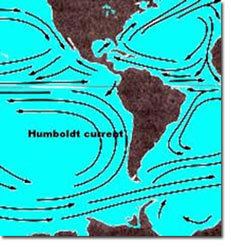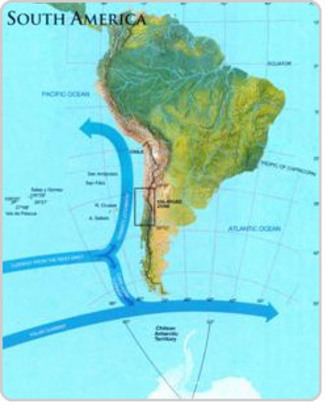 | ||
Chile s humboldt current sustainable fishing for healthy oceans 360 video
The Humboldt Current is a cold, low-salinity ocean current that flows north along the west coast of South America from the southern tip of Chile to northern Peru. Also called the Peru Current, it is an eastern boundary current flowing in the direction of the equator, and can not extend 1,000 kilometers offshore. The Humboldt Current Large Marine ecosystem (LME), named after the Prussian naturalist Alexander von Humboldt, is one of the major upwelling systems of the world, supporting an extraordinary abundance of marine life. Upwelling occurs off Peru year-round but off Chile only during the spring and summer, because of the displacement of the subtropical center of high pressure during the winter
Contents

The Humboldt Current LME is considered a Class I, highly productive (>300 gC/m2-yr), ecosystem. It is the most productive marine ecosystem in the world, as well as the largest upwelling system. The Humboldt’s high rates of primary and secondary productivity support the world’s largest fisheries. Approximately 18-20% of the world’s fish catch comes from the Humboldt Current LME. The species are mostly pelagic: sardines, anchovies and jack mackerel. The LME’s high productivity supports other important fishery resources as well as marine mammals (eared seals and cetaceans) and seabirds. The cold, nutrient-rich water brought to the surface by upwelling drives the system’s extraordinary productivity .
Periodically, the upwelling that drives the system’s productivity is disrupted by the El Niño-Southern Oscillation (ENSO) event. When this occurs, fish abundance and distribution are significantly affected, often leading to stock crashes and cascading social and economic impacts. These events have led to sequential changes, where sardines and anchovies have replaced each other periodically as the dominant species in the ecosystem. These species changes can have negative consequences for the fishing industry and the economies of the countries that fish the system.

The Humboldt has a considerable cooling influence on the climate of Chile, Peru and Ecuador. It is also largely responsible for the aridity of Atacama Desert in northern Chile and coastal areas of Peru and also of the aridity of southern Ecuador. Marine air is cooled by the current and thus is not conducive to generating precipitation (although clouds and fog are produced).

Humboldt current



